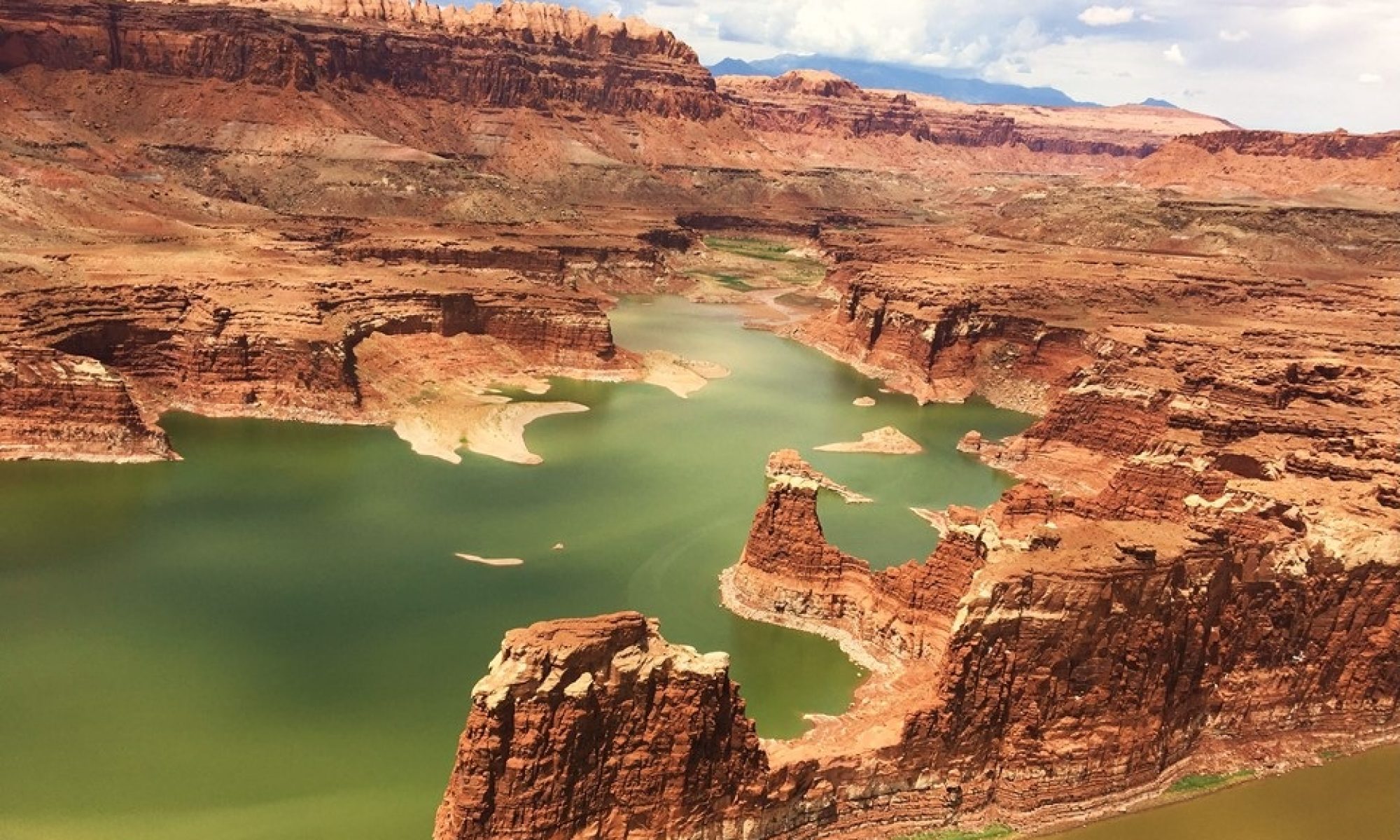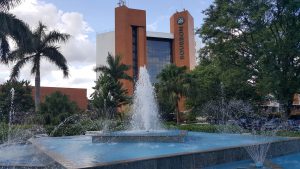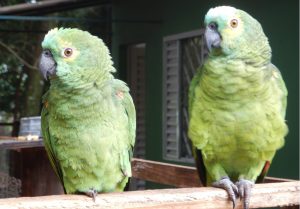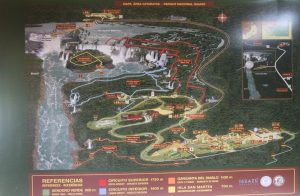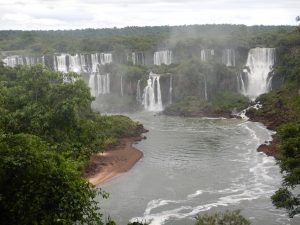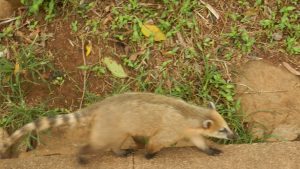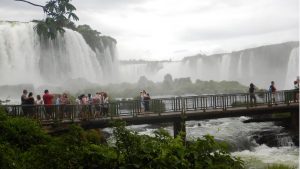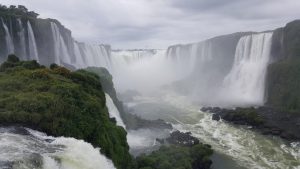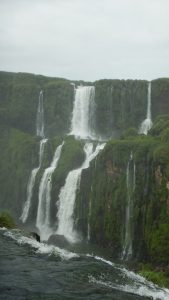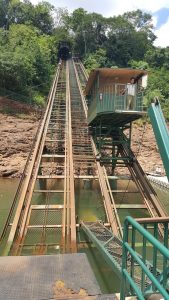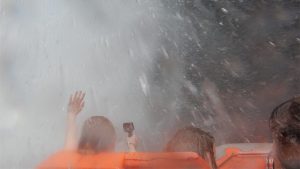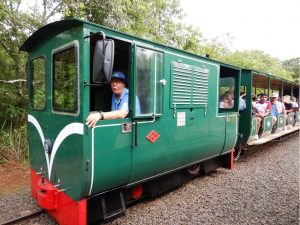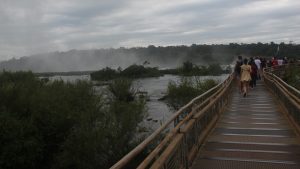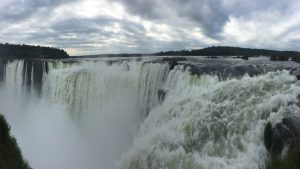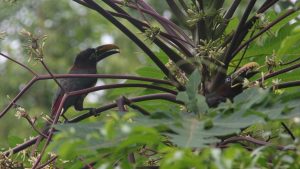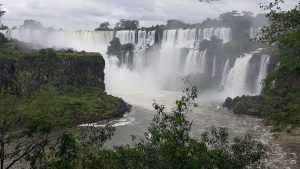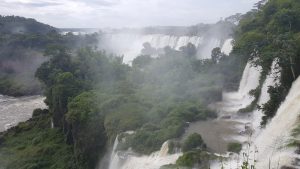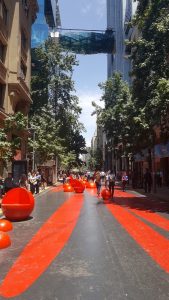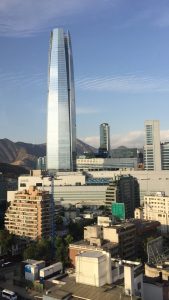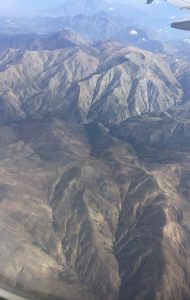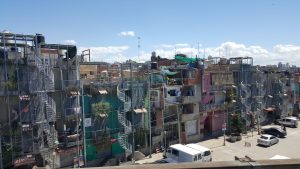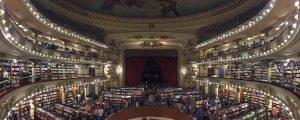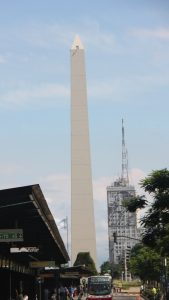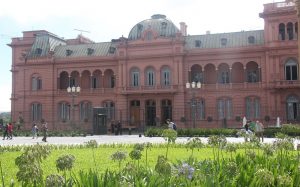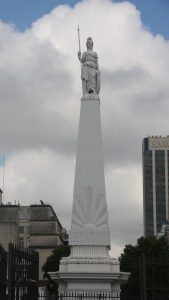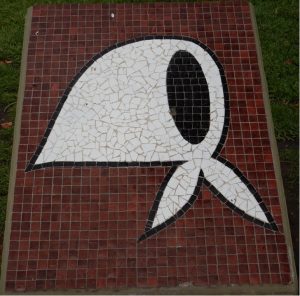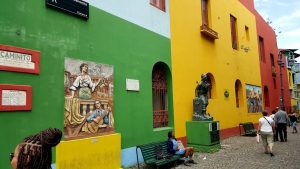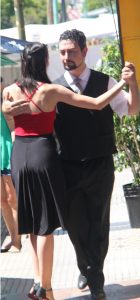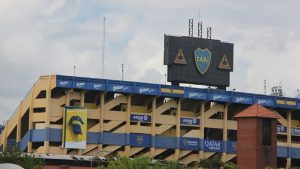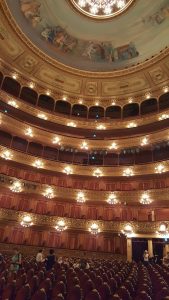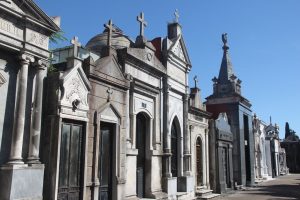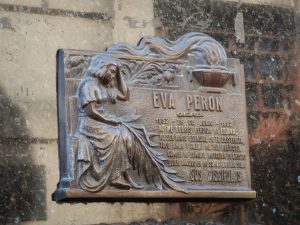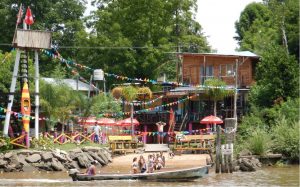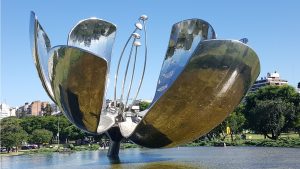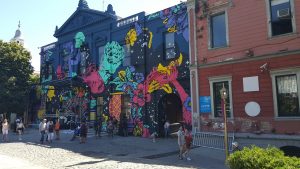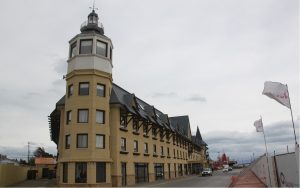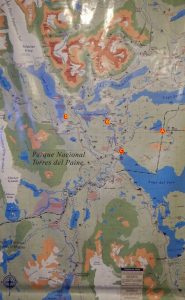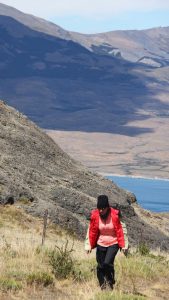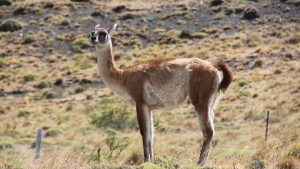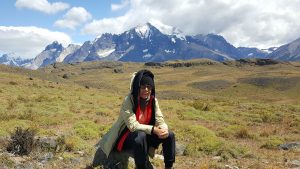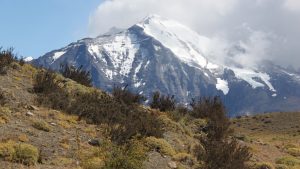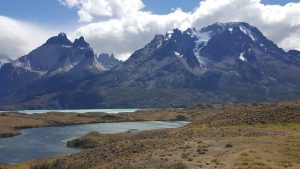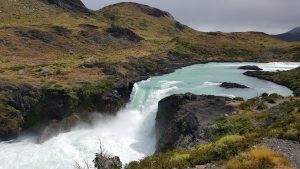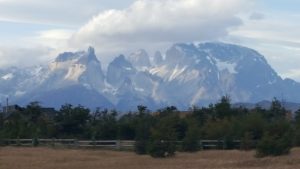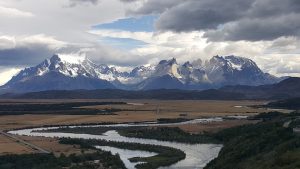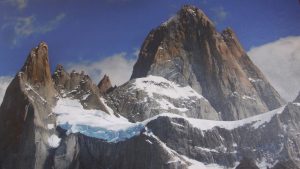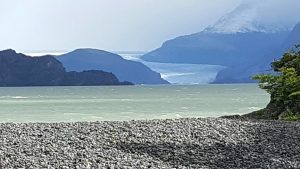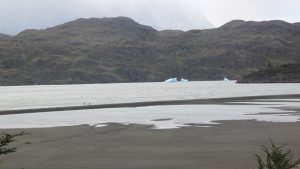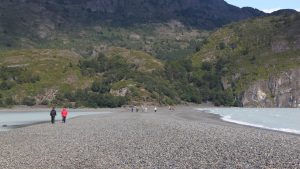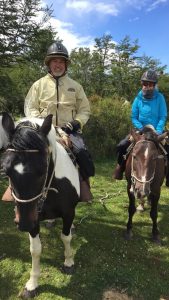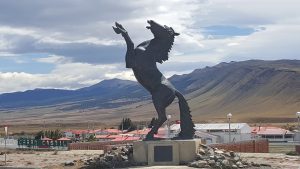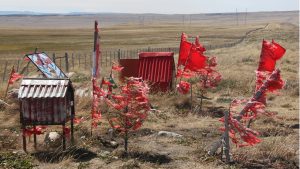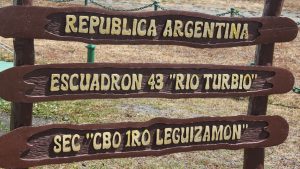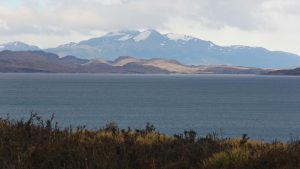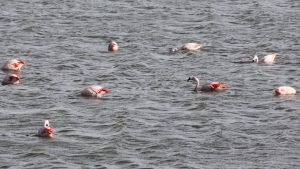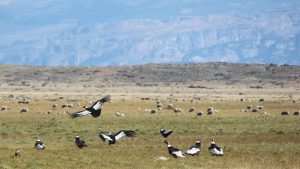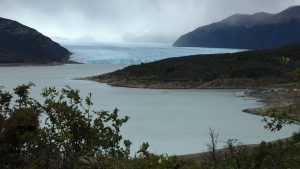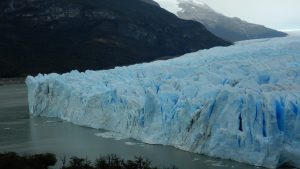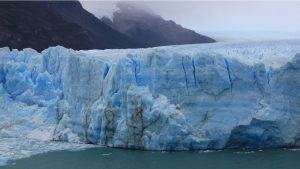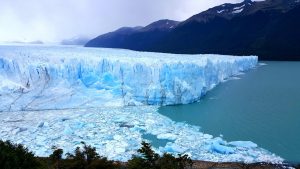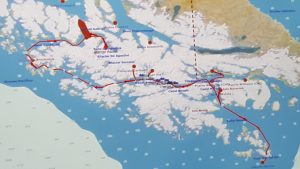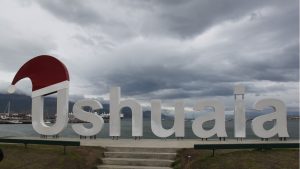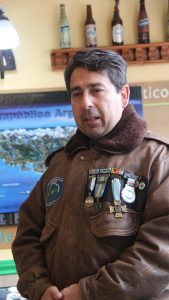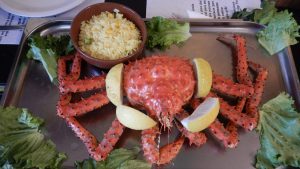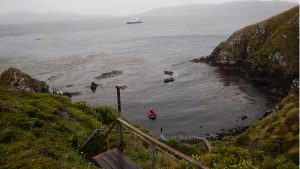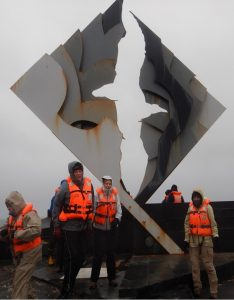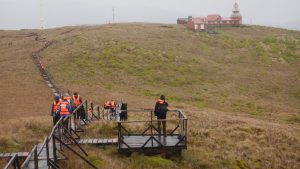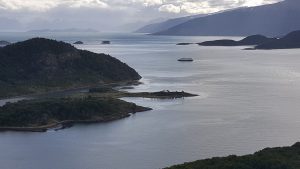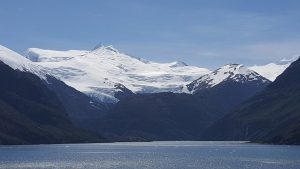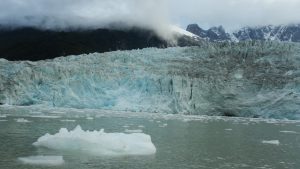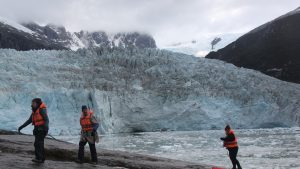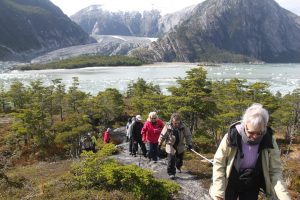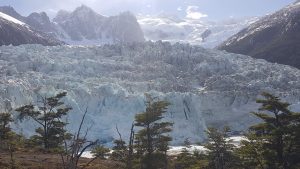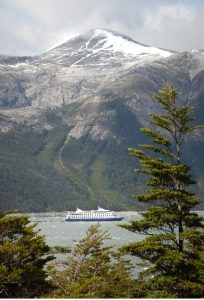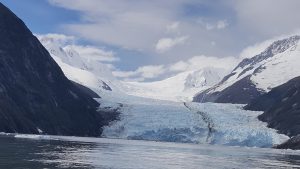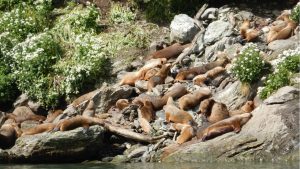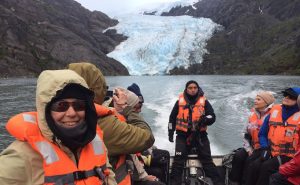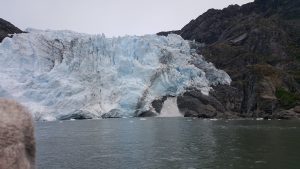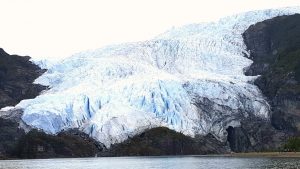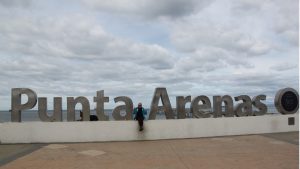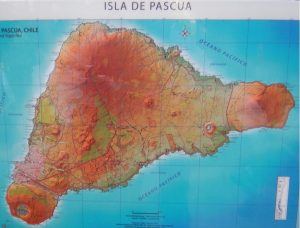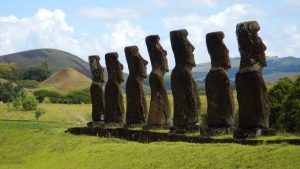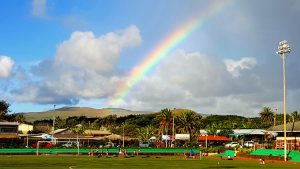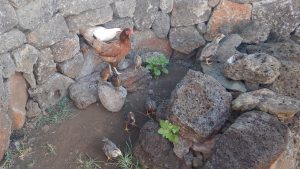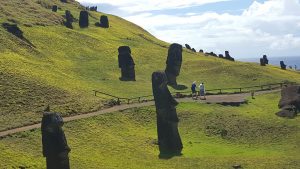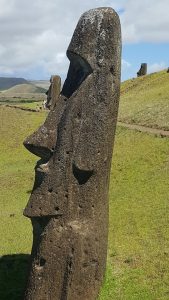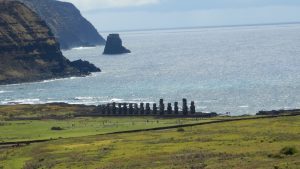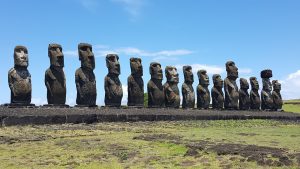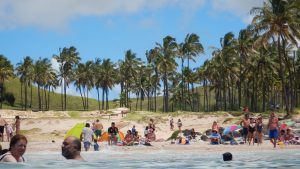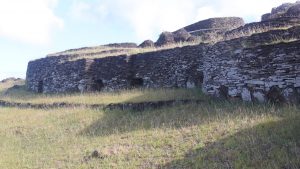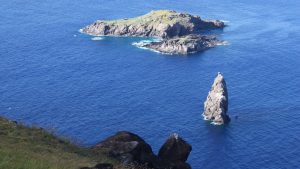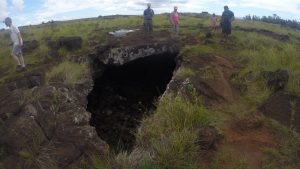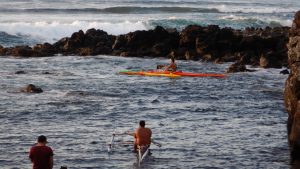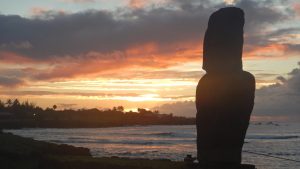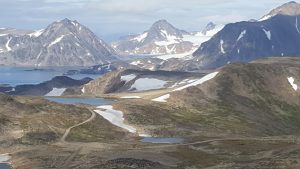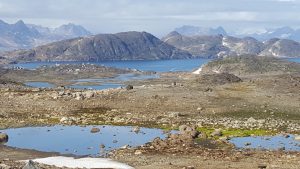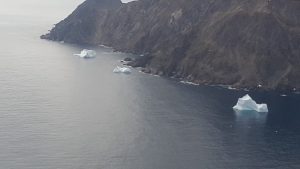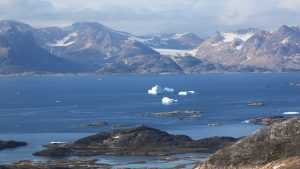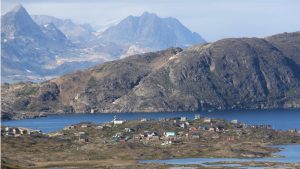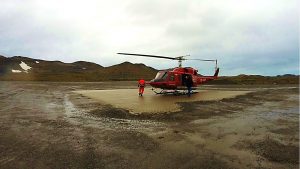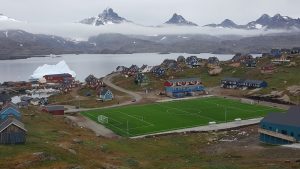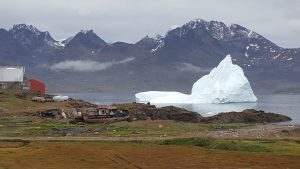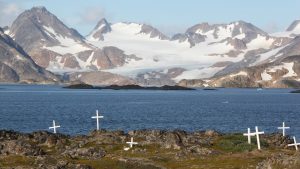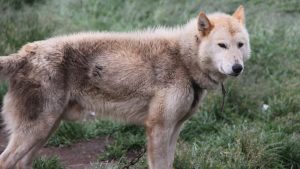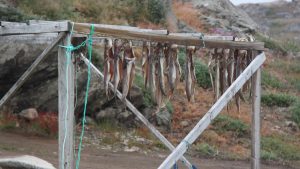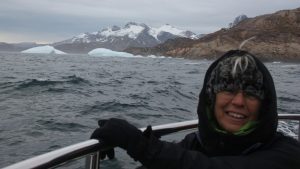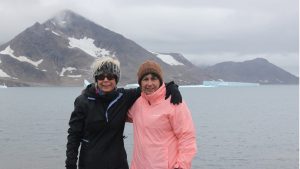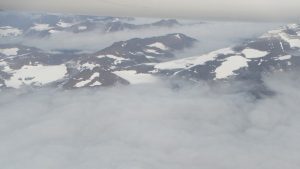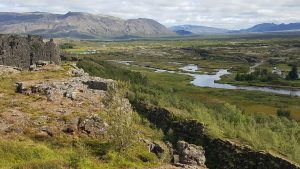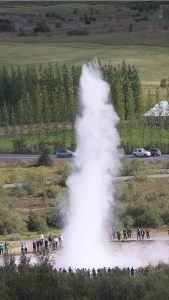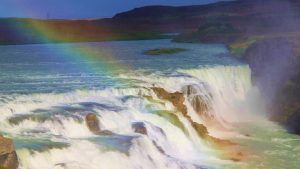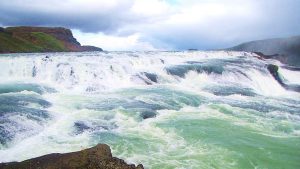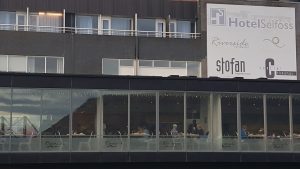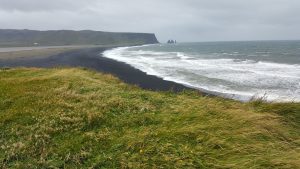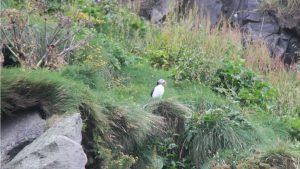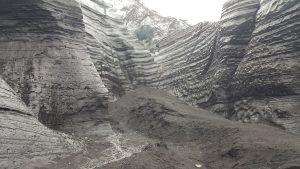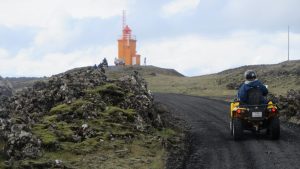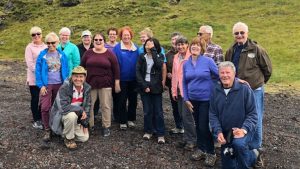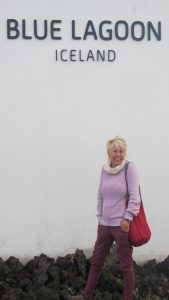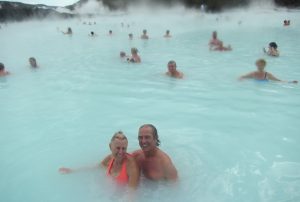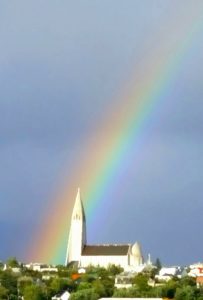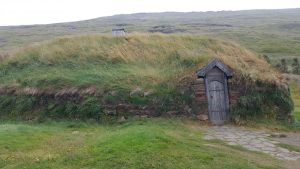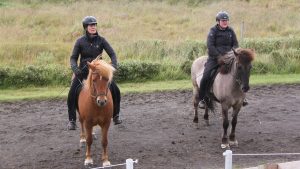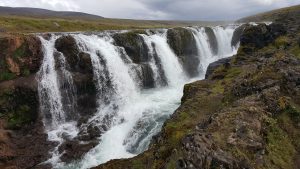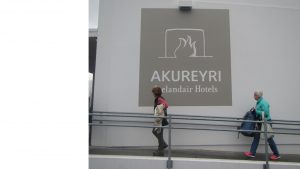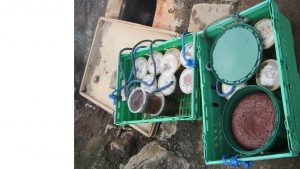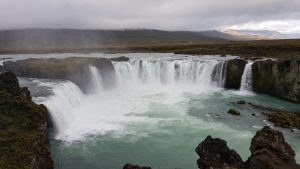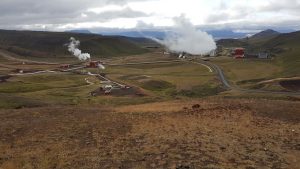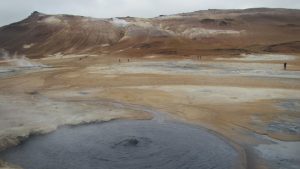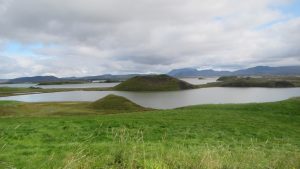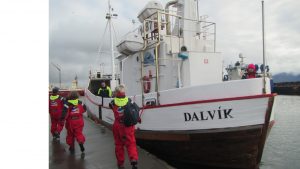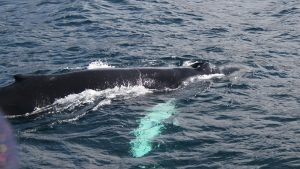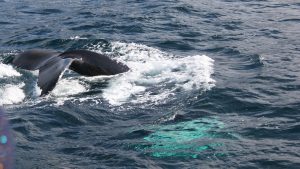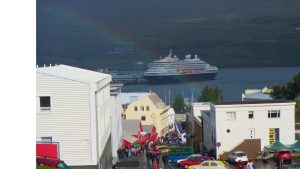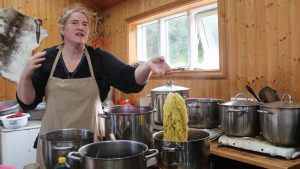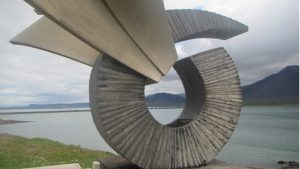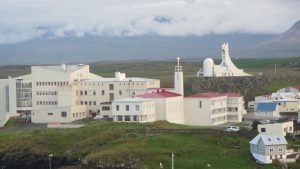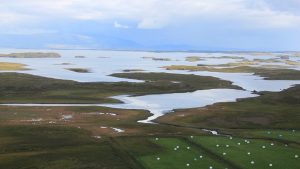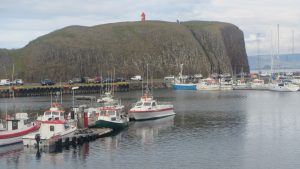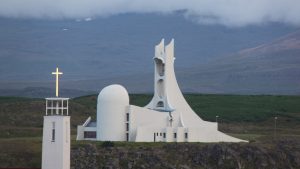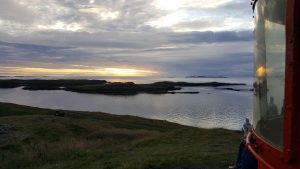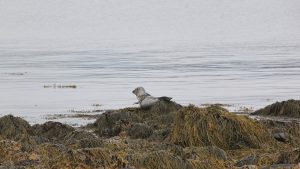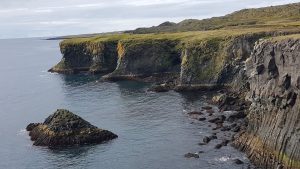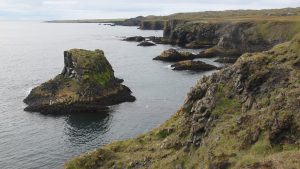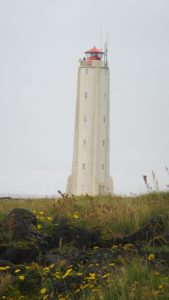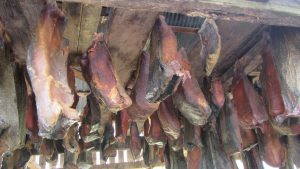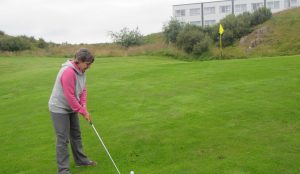We are staged in Buenos Aires at the Emperador Hotel where we assemble for a quick coffee at 5:30am before heading to the domestic airport for a 6:30am flight to Ushuaia which will take 3.5 hours. For this part of the trip, we are under the guidance of the Norwegian Company, Hurtigruten, as we will be on their Expedition Ship, the MS Fram. The flight is a charter flight on Latham Airline, and it will be carrying only people who are doing the same Antarctica trip as we are. Our luggage was taken by truck at 10pm the previous evening and we will next see it at the Ushuaia airport.
We arrive in Ushuaia at around noon and are greeted by wind and rain. We quickly transfer to buses for a very brief city tour showing us a scenic viewpoint from the old airport and driving us past the port and through downtown. We were then given an hour and a half on our own, and since we had been in Ushuaia before, we went off on our own looking for king crab soup and some gifts. There was a large Princess Cruise ship in Port, and the restaurants were crowded with tourists, so we finally settled for a crab bowl – a crab fondue served in a bowl made of a crusted bread. We finished our shopping and then headed back to the bus for a short, five-minute drive back to the Port and down the wharf to our ship.
We checked in, received our ID’s which are also a photo ID, a room key and a charge card, turned in our medical clearance forms (which were required for the trip) and picked up our Antarctic waterproof/wind jackets. These jackets, along with our rain pants and provided “muck boots”, are required on every shore landing in these pristine environments. Our cabin is on deck 6, and consists of 2 single beds, a bathroom, 2 closets, a small desk, a TV and a tray for our muck boots, which we will receive the next day. Our ship has 8 decks: 8 – Observation and sauna, 7- Panoramic Bar lounge, gym, whirlpools and sun decks, 6 – cabins, 5- cabins and observation terraces, 4 – dining room, gift shop, lobby, coffee station, and lecture halls, 3 – cabins, 2 – hospital and landings deck for zodiacs (polar Crikel boats), and 1 – crew quarters. While the boat holds over 250 passengers, at this sailing there are only 193 of us aboard. There are very strict landing rules in the Falklands, and especially in the South Georgian Islands and Antarctica. Ships with more than 200 passengers are not allowed to dock or anchor or offload passengers to the shore in the Antarctic Region. Due to our boarding, tonight’s dinner is buffet style; soup, salads, entrees and desserts (a comprehensive menu with many healthy choices and numerous vegetarian dishes). There are 3 official passenger languages on this trip: English, German and Chinese. Next was our mandatory briefing on how to put on a survival suit and life jacket then we reported and reviewed our muster stations. Finally, that evening, there was the Captain’s Welcome with drinks (champagne) and crew introductions. The expedition team on this trip is very large (17 people) with interpreters, geologist, biologists, marine biologists, historians, PhD students, researchers, and even a representative from ORCA here to observe and count wildlife. There will be lectures and photography classes and various other science lectures throughout the trip.
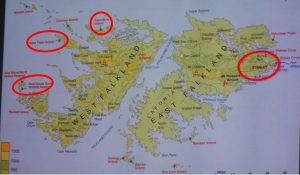
The ship left port ~2-hours late due to a late fuel delivery, and the late sun was setting as we sail east out of Ushuaia, through the Beagle Channel, towards the Falkland Islands. And so – the adventure begins.
On Saturday, February 9th, we are up early for a quick trip to the ship’s gym which has a stern and side view of the ocean. We followed this with showers, and with enjoying the breakfast buffet which included pancakes and soft- or hard-boiled eggs. We are just now exiting the Beagle Channel into the Southern Atlantic Ocean, and the seas soon change from 1-2-meter waves to 2-3-meter waves. Today, we will be at sea all day as we travel east to the Falkland Islands (The Maldives, as per Argentina). After breakfast, we head up to the forward observation deck on level-5 to meet with the ship’s naturalists, watch albatrosses and petrels soaring near the ship, and to look for whales. In a distance, we see a few whales blows, but nothing near to the ship. Later that morning, there is a briefing on what to expect for excursions, and on how to enter and leave the boat and the zodiacs. The passengers have been broken into 8 boat-groups with between 20 and 25 based upon travel groups and language. Following this, we are called by boat group to try-on and pick-up our “muck boots” which are required since all of our landings, which except for two, are “wet” landings. These boots are waterproof above the upper-calf and need to be inspected and cleaned regularly to insure no contamination of environmentally sensitive areas occurs. Lunch was a buffet with 4 choices of a main course, and in the afternoon, we were entertained by a lecture presentation titled, “An air of extreme desolation – introduction to the Falkland Islands’ natural history”.
Although there are a few indications that man may have set foot on the Falkland Islands earlier, they were uninhabited when the English explorer, John Davis, first sighted them in 1592, and when the English Sea Captain landed there in 1690 and named them in honor of Viscount Falkland. There are two principal islands – East and West, and numerous other smaller islands making up the islands, which are principally upraised sedimentary rock formed in the collision of the Scotia plate with the American plate. In the 1690’s, French merchants and sailors from St. Malo names the islands “Islas Malouines”, which evolved in Spanish to Islas Malvinas. The French created the first settlement at Port Louise on East Falkland in 1764, and the British settled on Saunders Island in North West Falkland Island in 1765.In 1833-1834, Charles Darwin sailed there from Argentina with Captain Fitzroy aboard “The Beagle” and explored the islands and described the geology and the fossil record. Subsequently, the British removed the French from the East Island, and settled Scottish settlers across the islands. In 1982, Argentinean troops landed and the British responses with the 3-month Falkland War. Today, the Islands claim their own sovereignty as a British Protectorate, although the Argentineans still claim them as rightfully theirs. This is not likely to be resolved as the exploration for oil and gas around the islands has already begun.
After the lecture, we sat in the 7th-floor panoramic lounge, watching the scenery and the growing waves. By tonight, they will each 16-20 in height, and many are starting to feel their effects. At 4pm, they ship serves a very proper British Tea, complete with scones and cakes, and with and assortment of teas and coffees. After dinner, we have a briefing about the following day’s landing. The plan is to go ashore at New Island Nature Reserve in the morning, and then move to the West Point Island site in the afternoon. We are reminded not to approach the wildlife too close as they do bite, and they can become stressed.
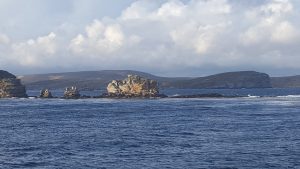
On Sunday morning, we are up early to go to the gym, and as the ship slows its speed, we can see various rock islands around us and some curious dolphins in the water. We arrive at New Island and, after the Expedition Team prepares the landing site, we begin to ferry ashore on the zodiacs, ~10 passengers at a time. The Expedition Team has brought ashore anything we might need for being stranded here for up to 24-hours, and has marked our ecologically-acceptable route with cones and flags. After a cold windy ride to shore it was an easy landing on a cement pier from which we begin our hike. This site is characterized by a small “museum” which was once the 1813 home of a ship wreaked American sealor, Captain Barnard. Once he was rescued, he wrote a book titled, “Marooned” and the small museum stands in his honor. There is a sunken ship, (“The Protector”), in the harbor, but we land a little up-the-coast on the western, leeward-side of the island and walk across to the large rock-hopper penguin rookery on the other side. Here, we see masses of rock-hopper penguins and many types of birds (including upland geese pairs, black-browed albatross pairs of which there are over 10,000 pairs, and cormorants). There are also over 2-million breeding pairs of Thin-billed Prions, a small burrowing petrel that is only seen at night.
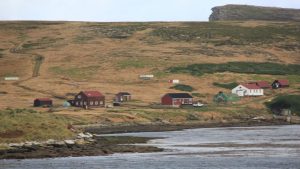
The rock-hopper penguins are identified by the colorful “eyebrows”, and they hop from rock-to-rock in their shared community with black-brown albatrosses. The young rock-hoppers are still maturing and haven’t yet left the area and are identifiable by their incomplete markings and traits. The albatrosses build their nest by piling-up mud and debris to form a mound, and their nests are filled with fluffy, young chicks that cannot yet fly. The rookery stretches over numerous hillsides and the penguin pairs number well into the thousands, many of them now molting. After observing the rookery for a while, we trek back to the leeward side of the island and climb an observation lookout for a view over the bay. This post was once an observation location during the Falkland’s War, and a crude stone shelter still stands there.
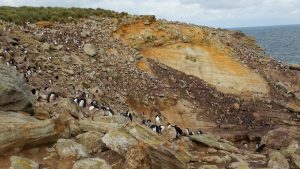
New Island is located on the far-western side of the Falklands and is privately-owned by a U.K. trust as a non-profit charity for wildlife conservation and scientific research. The Trust also owns several other small islands, of which most are uninhabited. This island currently has only 4 residents: an island manger, Gisela, an assistant, Alec, and two researchers. Gisela is in her first 6 months as manger on 2-year assignment here. Most visitors arrive here by ship. although there is a tiny airstrip at one end of the island which can accommodate a 2-passenger plane. The island also supported sheep and cattle farming in the early 1900’s, but in 1972, the island was sold to a British couple, and since then farming has decreased as research and tourism have grown. The island is rich in natural fresh water springs, and has 41 species of birds, as well as sea lions and Peale’s dolphins.
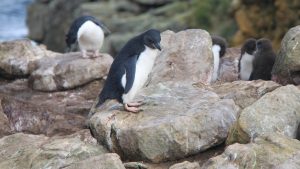
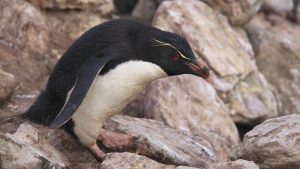
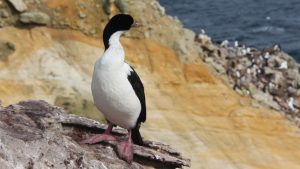
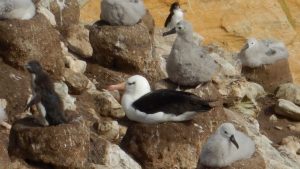
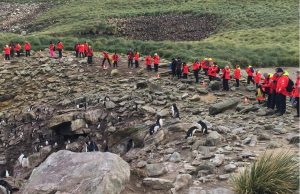
After visiting the museum and talking with Gisela, we prepare to return to the ship by washing our rain pants and boots in the surf before climbing in the zodiacs. Once on board the ship, we use brushes and hoses to again clean our boots to ensure no contamination of soil makes it to our future landings. Finally, we are greeted with hot tea and coffee and then a buffet lunch.
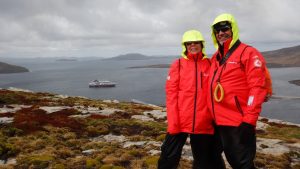
While eating lunch, our Expedition ship moves around to the leeward side of West Point Island.
West Point island is a small island with a large bird colony of 2100 pairs of albatrosses and more rock-hopper penguins. The local family there is expecting us and has prepared a set of cookies and treats for us ashore. However, we were unable to take the leeward channel into the West Point landing as the wind was too strong, so, instead, the Captain takes us around a large reef and tries to enter the Bay of West Point from another direction. But the winds are still too high for a landing and we regretfully leave the area. As we leave the area, we saw a flock of terns diving in the water for food, and upon looking more closely, we saw a group of penguins porpoising through the water bringing a meal back to their young.
That night we enjoy a dinner buffet, and later that evening we have a briefing regarding the next day’s program, hopeful that the weather will allow us to be able to return to West Point in the morning.
Monday morning, we were up for buffet breakfast and looking forward to an 8am landing on West Point, the island we attempted to reach the day before. However, the wind is howling this morning, and so we travel further down the channel to see if we can pull into the windward-side of Saunders Island. Saunders Island is relatively large – 51 square miles – with a coastline of 66.4 miles. It consists of 3 peninsulas linked by narrow necks of land. It is owned by a single British gentleman named David. The first settlement on the island was in 1765 by the British. The sea in this area is full of albatrosses and gulls, with many white caps on the waves as the wind is now gusting at 50-60 knots. If we can land, we plan to do a 5 mile-hike today. As we approach from the windward side it was so windy that the Captain did not even want to attempt to anchor, so we decided to sail around the island to the leeward-side. However, the landing by the Expedition Team was difficult, so they bring David back to our ship for lunch and hope for better conditions later in the afternoon. By 2pm the Captain has moved the ship even closer to shore and we are finally able to ferry to shore – this time on smaller zodiacs with only 6 passengers at a time. The reward for our patience to get onto the island was well rewarded. Once ashore, we were greeted by thousands of Gentoo penguins and a few petrels. As we walked to the far end of the beach, we saw even more gentoo penguins and then came across ~ 20 king penguins. On the hill above were a flock of sheep which seem to get along just fine with the penguins. As we continued to make a loop of the colony, we saw rock-hopper penguins up in the rocks of the hillside. Then we spotted our first Magellanic penguin among a flock of Gentoo’s. It was then we noticed some penguin chicks being protected by dad – a fluffy ball of white feathers. We also witnessed mom regurgitating krill for her young chick to feed. As we headed back to the dinghy, we marveled at the flocks of penguins who were wave-surfing up onto the beach. Near our exit location, we spotted an entire colony of Magellanic penguins burrowed to in the hillside. Such an awesome day.
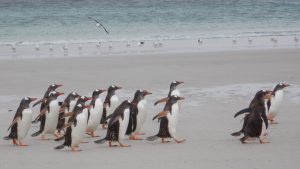
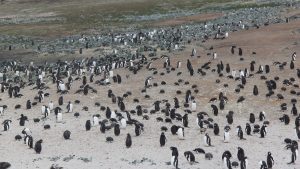
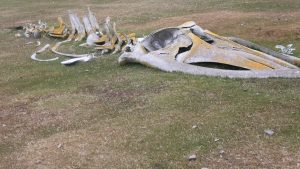
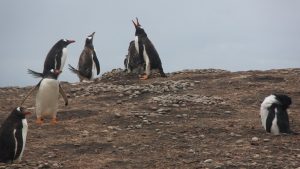
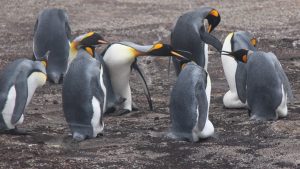
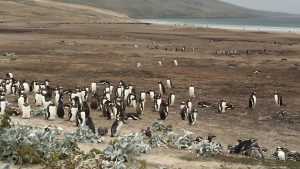
We returned to the boat for a Norwegian buffet dinner, and while the food was good, everyone was talking about the amazing beach of penguins. After dinner we had a briefing for the next day: a day in the town of Stanley, the capital of the Falklands.
Tuesday morning, February 12th, and we are up early to watch us sail into the Port of Stanley, which is protected from the seas through a narrow neck of water which larger ships cannot pass through. Stanley is the Capital of Falklands and was settled by the French in 1764 and later taken over by the British. The first government house was built in 1845. Today the population of Stanley is ~3,500, and, given that this is the capitol of the Falklands, there is a post office in city hall where one can buy lots of philatelic stamps, as well as a dance hall and a courthouse with courtrooms. The only jail in the islands is here and it only holds 13 prisoners maximum. Stanley’s site was well chosen for early settlers as there was a steady supply of peat which used to be the popular choice for heating & cooking during the 19th and 20th centuries. However, less than 19% of the population still use peat, and most residents have switched to propane. There is an airport with weekly flights to Punta Arenas and twice a week flights to Great Britain. There are no flights to Argentina since the Falkland’s War, and locals still remember when the Argentinians invaded the island in 1982. The main export for the Falklands is sheep, and most everything else had traditionally arrived by ship. However, in the last few years huge gardens and green houses have been erected for the islands to have a steady supply of fresh fruit and vegetables grown locally.
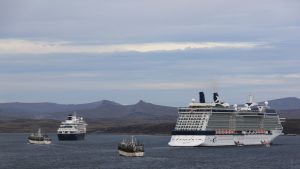
We started our day with a long hike out of town around the bay to Tysons Cove and Gypsy Cove, passing the shipwrecks of the Lady Elizabeth and the Plym. At each of the coves on the outer edge of the island we encountered large Magellanic penguin colonies. As we continued around the peninsula, we come upon some of the 14 abandoned mounted-gun stations and, in contrast, nesting penguins in burrows in the same hillside. On the way back to the ship, we walked along the bay’s shoreline and collected sea-glass. Once we arrived back at the ship, we filled our thermos with hot chocolate and caught the shuttle to town, where we were dropped at the Historic Dockyard Museum. Along the way we saw several whale skeletons left over from early whaling days! Once there, we toured the Dockyard Museum and explored the heritage and history of the islanders, learned about the early explorers, the invaders and the liberators, the animals, rocks and plants, and the sea around us, (Charles Darwin spent longer in the Falklands than he did in Galapagos). The Government house was refurbished, and the Jubilee Villas were built in honor of Queen Elizabeth’s 60th anniversary. We saw the whale-jawbone arch in the center of town and checked out the souvenir shops, the post office, and a local bar. At the Victory Bar, we had beer and one of the best fish-n-chips we have ever tasted! Of course, we continued walking before sitting at the waterfront drinking hot chocolate and people watching. There were 3 ships in port that day: A Celebrity cruise ship – The Eclipse registered in Malta; a Holland American cruise ship – Prinsendam from Rotterdam; and ourselves on the M.S. Fram, registered in Norway. There was also a beautiful private white yacht in harbor the “Game Changer” complete with helicopter and pad and a submarine on board.
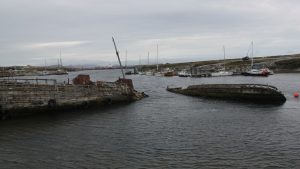
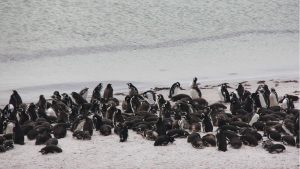
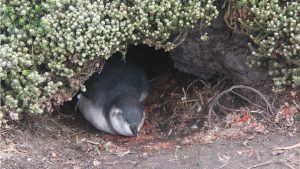
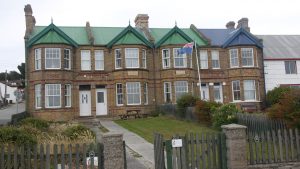
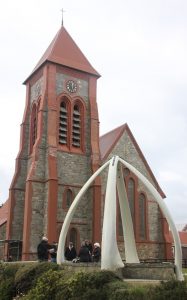
We finally took the shuttle bus back to the ship when it started to drizzle to end a thoroughly enjoyable day! When we arrived at the ship, it was Tea Time with tea, scones, and small sandwiches in a proper British manner, (and the scones are still warm from the oven and are quite lovely).
Dinner that night was served in sit-down manner and with a very French menu of chateaubriand and béarnaise sauce. That night, we are advised by the Captain to batten down our things in the cabin as there will be a bit of rough seas. And then, we head to the open seas for the next 2 days in route to the South Georgian Islands. We are quite privileged to go there, as the South Georgia Islands only receive ~7000 visitors a year. In fact, it is remote enough that many of the ship’s crew have not yet been there, and it is out-of-the-way from the more normal Antarctica route.
Wednesday morning, we get up early to go to the gym as this is a to be a full day at sea. The waves are a bit “rolly” and one must keep both hands on the treadmill, even while walking. Breakfast was poorly attended this morning, likely due to the waves and weather. At breakfast, two jelly jars slide off the buffet line making a sharp and sticky mess on the dining room floor. The rest of the morning, we sat in the lounge on the 4th deck and did email as a few waves crashed over the ship, covering the windows completely. The Captain announced that we would have waves of 21-25 feet tall with 35 mph wind gusts, and that passengers should be careful walking.
Since it is a sea day, the ship’s crew practice an emergency drill at 10:15 am. At the same time. the Expedition Crew gave us a briefing on the South Georgia Islands and Antarctica. Passengers will have the opportunity to do several hikes in South Georgia and potentially kayaking and camping in Antarctica. We then learned about the need for bio-clean outerwear in order to protect the environment in both areas and will spend the afternoon getting our clothing vacuumed and our boots cleaned, inspected and sanitized. We actually have observers on board from IAATO (International Association of Antarctica Tour Operators) to make sure we comply with the rules and regulations, and we are told that an inspector from South Georgia will come aboard to certify and allow us ashore. Biosecurity cleaning will be a part of every time we leave and re-board the ship. We also watch a required movie about proper procedures and rules for our excursions and time ashore.
That night dinner is seated, but with minimal items on the table as the boat is still rocky and rolling – no water pitchers, no wine glasses, and minimal items that can slide off or fall over. Tonight, we start to see a few passengers with arms in slings, and with a few bandages who have obviously injured themselves during the past day. After dinner, the Shackleton Story movie was shown and then we watched a slide-show recap of the Falkland Islands presented by the Expedition Crew. We even played a small “Jeopardy” game whose categories were “Penguins”, “Petrols and Albatrosses”, and “Ducks and Geese” and the game gave the crowd a good energy boost. That night, we skipped the outdoor hot tub visit as there was way too much wave-action and sloshing taking place.
Thursday morning, February 14th and it is Valentine’s Day! Last night there was a time change and, since we have traveled east. we are now the same time as Rio de Janeiro and Sao Paulo, Brazil, although it is apparent that several passengers forgot to change the time on their watches and phones. Breakfast buffet takes place with a multitude of “Happy Valentine’s Day” wishes. Today is an “at sea day” again, and the day will be filled with various lectures on whales, birds and the history of the South Georgia Islands. Today, the wind is from the northwest at only ~20mph (a lot less than the day before) but the temperature has slowly been dropping – today it is a high of 40 degrees and the water is at the same temperature.
After lunch, while relaxing in the panoramic lounge, the Captain announced we would soon be coming along-side of “Shag Rocks” as we continue to sail towards South Georgia Islands. It is raining and cold, but we go outside to get pictures. The rocks look a bit like the remnants of a caldera, but we expect to see a variety of birds around them. However, we are pleasantly surprised when the Expedition Crew spots several whale-blows straight ahead of us. The Captain obliges by moving in that direction, and we are soon beside a huge pod of whales feeding voraciously of the abundant krill in this area. There are many Sei whales, as well as lots of larger Fin whales and at least four humpback whales. The whale specialist on board estimated that there were at least 100 whales in this group, and even one male Orca was spotted. At one point, there were whales on both sides of the ship, as well as at front, and we also saw small dolphins and seals and many seabirds participating in the feast. The captain kept them within sight for ~45 minutes or more. Although it is known that whales like to feed around Shag Rock. no one can ever remembers seeing that many different types of whales feeding together at one time. The Sei whales are plentiful around the Falklands and can often be easily spotted by their blows, which are 6-8 meters tall.
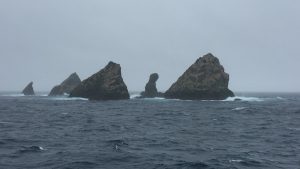
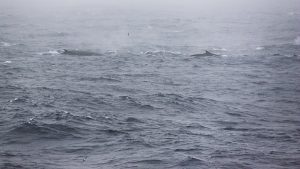
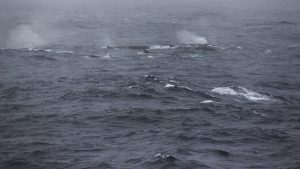
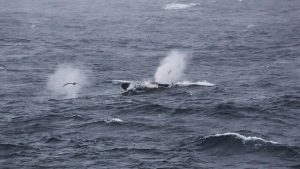
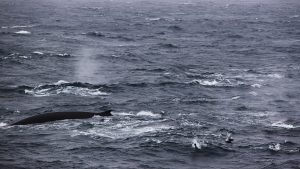
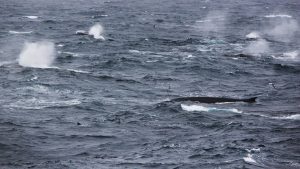
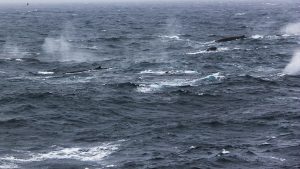
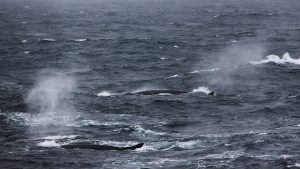
That night, we had another seated dinner with a vegetarian theme. Marco, our guide presented us with a bottle of champagne to mark us having been together for 45 years. After dinner we attend the mandatory briefing discussing the landings tomorrow and the environmental rules, and then it was followed by a “talk show” hosted by two of the expedition guides who discussed Shackleton.
